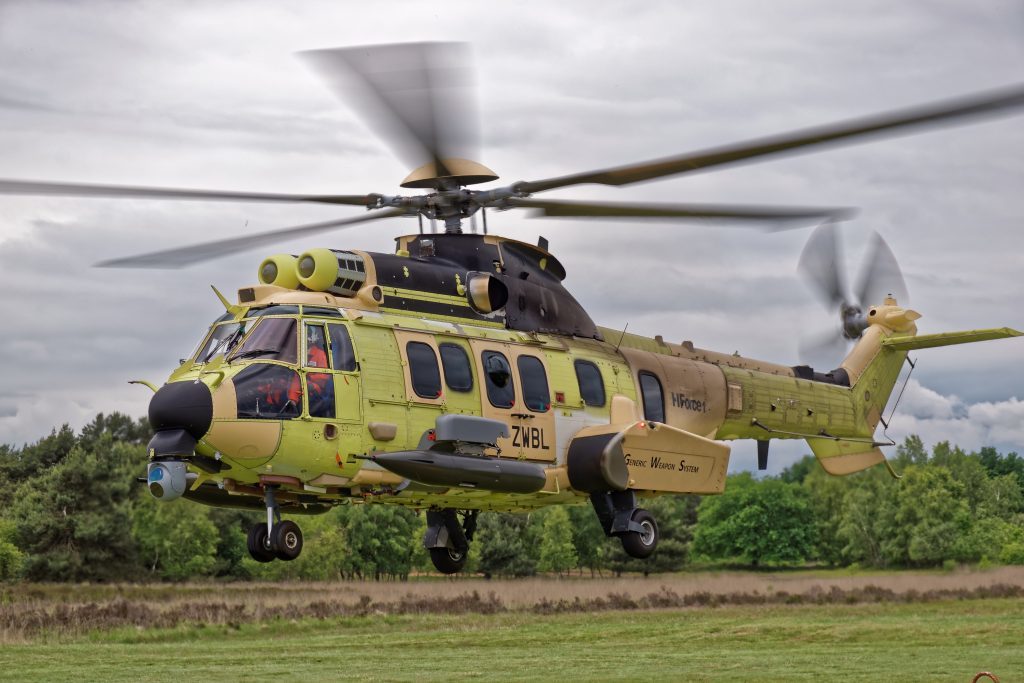
Controversial offshore helicopters are to have a flight ban lifted in the UK and Norway, paving the way for a return to the North Sea.
Super Puma aircraft have been grounded in both countries since a fatal crash off Norway last year.
But aviation watchdog the CAA has now said it has the confidence in a safety overhaul undertaken in the aftermath of the Turoy tragedy.
Flights will not resume immediately and aircraft operators will have to supply a safety case before returning the AS332L2s and the H225s to service.
The move follows extensive investigation, testing and changes to the helicopter and its maintenance
The helicopters had already been cleared to fly by the European Aviation Safety Agency in October 2016.
But the UK and Norwegian authorities said that they would only lift the ban if they were “absolutely” sure the aircraft is safe to fly.
Explaining the decision John McColl, head of airworthiness at the UK CAA, said: “This is not a decision we have taken lightly. It has only been made after receiving extensive information from the Norwegian accident investigators and being satisfied with the subsequent changes introduced by Airbus Helicopters through detailed assessment and analysis.
“The safety of those who travel on offshore helicopter flights is a key priority for both the UK and Norwegian aviation authorities. We would not have made this decision unless we were convinced that the changes to the helicopters and their maintenance restore the required airworthiness standards.
“We continue to work with the helicopter operators, the offshore industries, international regulators, unions and pilot representatives to enhance offshore safety standards still further and all these parties are actively involved in ongoing discussions.”
A statement from the CAA said Airbus Helicopters has developed modifications and enhanced safety measures for the helicopter models.
Les Linklater, executive director of Step Change in Safety said: “We note that the Civil Aviation Authorities in the UK and Norway have set out plans to lift the operating restrictions currently in place on the H225LP and AS332L2 Airbus helicopters. It is extremely important to point out that this will not mean an immediate return to service.
“Moreover, it will be up to the oil and gas companies and helicopter operators to decide if they wish to consider the return to service of these aircraft. Any re-introduction will require a robust safety case, as well as a requirement for a series of checks, modification and inspections that must be carried out before undertaking any flying.
“At this time, there is an ongoing Airbus survey for pilots and passengers regarding these specific helicopters’ flight safety and comfort, which was issued just one week ago. It’s our understanding that this survey still has a further three weeks to run.
“Given the importance of the workforce’s opinion regarding this highly emotive subject we do not feel it’s appropriate to make any further comment until Airbus has gathered, and shared, the survey’s results and can demonstrate how they intend to address any concerns raised by the workforce.
“We would encourage all members of the workforce to participate and have their voices heard.”
Changes and modifications made to the helicopter and its maintenance by Airbus Helicopters include:
• Change in the design by removal of the components that were susceptible to premature deterioration.
• Earlier replacement of components
• Design change to introduce an improved maintenance inspection method to detect any deterioration at an early stage.
• More frequent inspections
• Reduction in the thresholds for rejecting components based upon early signs of any deterioration.
For more reaction to this story check out tomorrow’s Press and Journal.
Recommended for you
